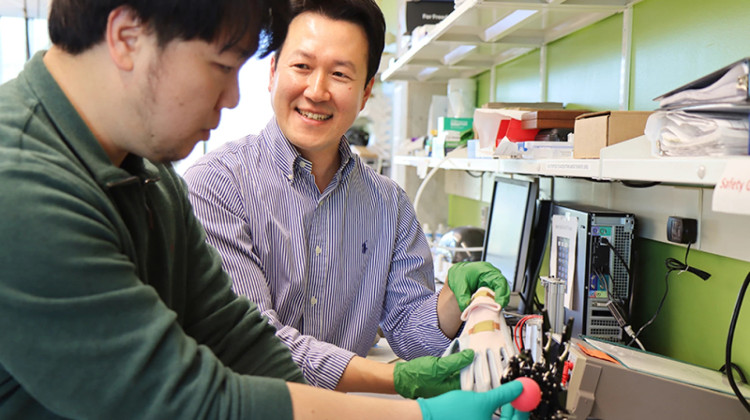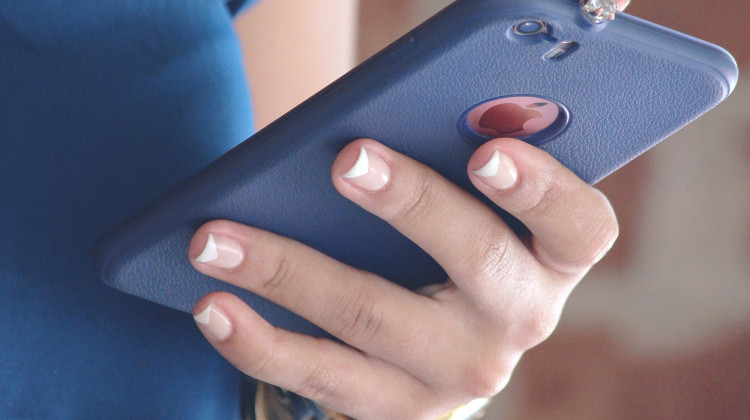
Using a robotic hand, Jinwook Baek (left), postdoctoral research assistant, and Sunghwan Lee, assistant professor of engineering technology, examine how a flexible and wearable sensor could be used to monitor health information and manipulate a small object (ball).
John O'Malley / Purdue UniversityThe words “Fabric sensors” might not sound that exciting, but imagine if you were on 24-7 bed rest and you had to wear multiple health monitors, overseen by medical staff.
Today those electronic health sensors are inflexible, and not breathable, but a new application of a breathable, thin polymer layer, could change all that.
Sunghwan Lee of Purdue of the Purdue Polytechnic institute is leading the project. He said the aspect of breathability is important to the patient’s comfort, and often overlooked.
“Not that many people have been focused on this breathability issue even though it is quite an important issue,” Lee said. “This technology will be a breakthrough technology and also for other wearable electronic devices as well.”
Lee said this breathability is achieved, because the process of coating the everyday fabric with the polymer sensor material actually coats each thread of the fabric individually. The spaces between threads remain intact instead of simply coating the entire surface.
Lee believes this technology can eventually be used widespread in hospitals.
This patent-pending technique uses oxidative chemical vapor deposition or oCVD, to paint the complex polymer electronic sensors into everyday fabric.
It has been applied to gloves and masks.
Lee said the current cost of the process will keep it out of hospitals in the near future. “We believe that this technology actually eventually, eventually can be implemented in many hospitals,” he said.
But when available, he said this technology can help medical providers remotely monitor a patient’s vitals like blood pressure and respiration in a direct way.
“So in many cases when we visit a hospital, nurses or other medical experts first need to manually count this respiratory rate, or indirectly measure this respiratory rate by utilizing other information.”
If the patient is wearing these polymer sensors, all this information can be gathered remotely.
This process was developed over the Pandemic, and was featured in the peer-reviewed journal Science Advances.
Lee said this process is new and groundbreaking because of the breathability achieved, and the ability to apply the sensor material directly to everyday fabric, reducing steps in the manufacturing process.
The material has also been demonstrated to operate a robotic hand remotely, using a plain old fabric glove with this coating added.
Under repeated stress tests, the material, called PEDOT, maintained its sensor capabilities.
 DONATE
DONATE






 Support WFYI. We can't do it without you.
Support WFYI. We can't do it without you.